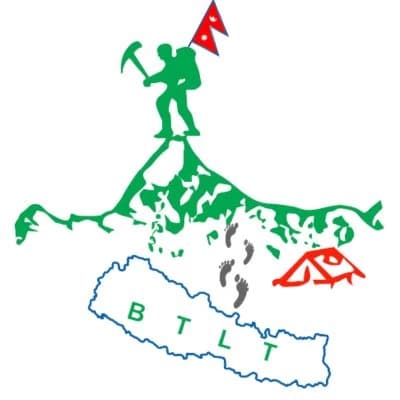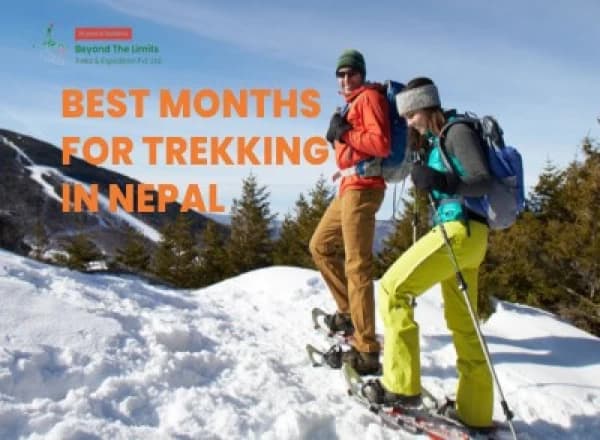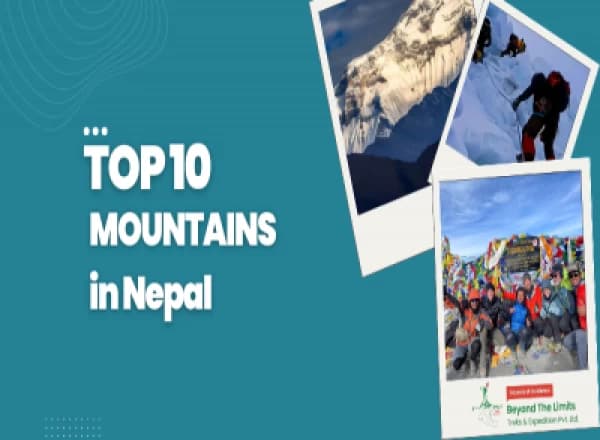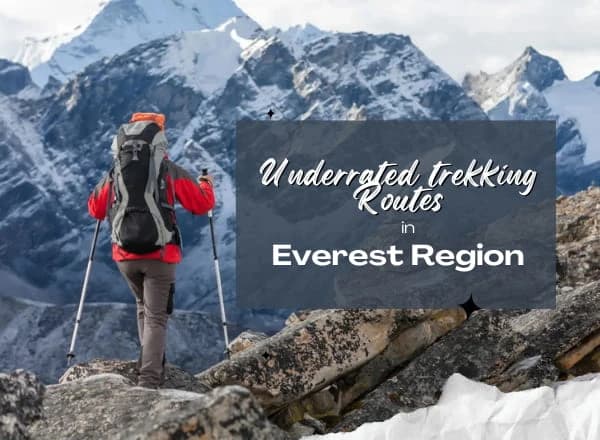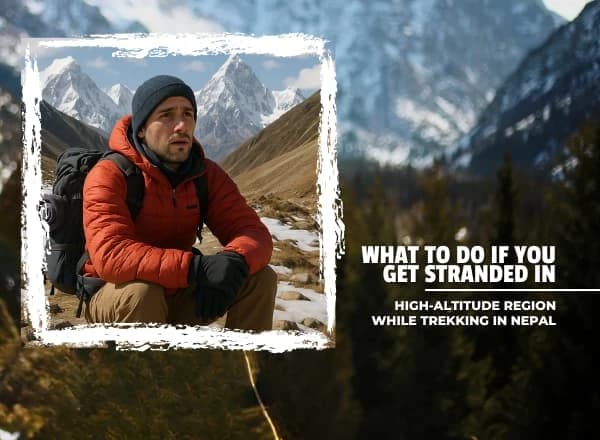1. Island Peak Climbing:

Island Peak, also known as Imja Tse, is a stunning emblem of the Khumbu region’s allure, challenging and enchanting climbers with its 6,189 meters (20,305 feet) height. It offers an exhilarating climb, incorporating both trekking and mountaineering experiences, making it a perfect choice for adventurers to venture beyond classic trekking routes.
The journey to Island Peak embarks from the legendary Lukla, winding through the vibrant Sherpa heartland of the Everest region, including Namche Bazaar and Tengboche, before reaching the peak’s base camp. Climbers are rewarded with breathtaking views of the Himalayas, including Everest, Lhotse, and Ama Dablam. The ascent combines glacier travel, snow, and ice climbing, culminating in a summit that provides an unmatched sense of accomplishment.
Highlights:
- Scenic flight to Lukla, the gateway to the Everest region.
- Trekking through iconic Sherpa villages like Namche Bazaar and Tengboche, offering cultural insights and spectacular mountain views.
- Acclimatization days that double as opportunities to explore local monasteries and Sherpa culture.
- The thrilling ascent to Everest Base Camp and the hike to Kala Patthar for an up-close view of Everest.
- Technical climbing experience on Island Peak, involving glacier navigation, crampons, and roped climbing.
- Summiting Island Peak for panoramic views of the Himalayan giants.
Best time to Trek Island Peak:
The best times to embark on the Island Peak adventure are during the pre-monsoon season of March to May and the post-monsoon season of September to November. These periods offer stable weather, clear skies, and minimal precipitation, making them ideal for climbing and ensuring the best views of the surrounding Himalayas.
Island Peak Climbing Itinerary:
✔ Day 01: Arrival in Kathmandu (1310m.)
✔ Day 02: Preparation for Trekking and Climbing
✔ Day 03: Flight to Lukla and trek to Phakding (2610m.), 3/4 hours walk
✔ Day 04: Phakding to Namche Bazaar (3430m.), 5/6 hours walk
✔ Day 05: Rest at Namche with some excursion
✔ Day 06: Namche to Tengboche (3867m.), 4/5 hours walk
✔ Day 07: Tengboche to Phiriche (4260m.), 4/5 hours walk
✔ Day 08: Rest at Phiriche
✔ Day 09: Phiriche to Lobuche (4930m.),5/6 hours walk
✔ Day 10: Lobuche to Everest base camp and return back to Gorekshep, 7/8 hours walk
✔ Day 11: Hike to Kalapatthar and then return back to ding boche 7/8 hours walk
✔ Day 12: Trekking from Ding Boche to chhukung ( 2-3 hours)
✔ Day 13: Chhukung to Island Peak base camp (5,200m/17,060ft): 3-4 hours
✔ Day 14: Pre-climb training on Island Peak Base Camp
✔ Day 15: Island Peak base camp to Island Peak summit (6,189m/20,305ft),back to base camp: 10-12 hours
✔ Day 16: Island Peak Base Camp to thyangboche (3,985m/13,074ft) 5-6 hours
✔ Day 17: Thyangboche to Namche Bazaar (3,440m/11,286ft): 4-5 hours
✔ Day 18: Namche Bazaar to Lukla (2,800m/9,186ft): 6-7 hours
✔ Day 19: Lukla to Kathmandu Flight. Overnight at Kathmandu Hotel. Farewell dinner
2. Mera Peak Climbing:

Mera Peak, standing at 6,476 meters (21,247 feet), is renowned as one of the highest trekking peaks in Nepal. Situated in the less frequented Hinku Valley, this peak provides a challenging yet achievable climb for those with basic mountaineering knowledge. The journey to Mera Peak begins with a flight to Lukla, followed by a trek through the beautiful and remote trails of the Makalu Barun National Park.
Mera Peak Expedition offers the thrill of peak climbing but also immerses adventurers in the splendid isolation of Nepal’s rugged landscapes. The ascent of Mera Peak involves crossing high passes and glaciers, culminating in a summit that offers one of the best panoramic views of five peaks above 8000m in Nepal: Everest, Lhotse, Cho Oyu, Makalu, and Kanchenjunga.
Highlights:
- Scenic flight to Lukla, the starting point of many Everest region adventures.
- Trek through the serene and untouched landscapes of the Hinku Valley.
- Acclimatization days to adjust to the altitude and explore the surroundings.
- The challenge of crossing Zetra Pass to reach Thule Kharka, enhancing the adventure spirit.
- Trekking to Khare, the base of Mera Peak, with stunning views en route.
- The exhilarating climb to Mera Peak’s summit, offering breathtaking panoramic views of the Himalayas.
- The sense of achievement upon reaching the summit of one of Nepal’s highest trekking peaks.
Best time to Trek Mera Peak:
The optimal seasons for Mera Peak climbing are during the spring (March to May) and autumn (September to November). These months feature stable weather conditions, clear skies, and moderate temperatures, ideal for high-altitude trekking and climbing.
Mera Peak Climbing Itinerary:
✔ Day 01: Arrival in Kathmandu (1310m.)
✔ Day 02: Preparation for Trekking and Climbing
✔ Day 01: Arrival in Kathmandu(1345m/4411ft)
✔ Day 02: Trip Preparation for Mera Peak (1345m/4411ft)
✔ Day 03: Fly to Lukla and Trek to Chhuthang
✔ Day 04: Trek from Chhutang to Thuli Kharka(4,600m) via Zatrawala Pass
✔ Day 05: Trek from Thuli Kharka to Kothe(4,182m)
✔ Day 06: Trek from Kothe to Thangnak(4,326m)
✔Day 07: Trek from Thangnak to Khare(5,000m)
✔Day 08: Acclimatization day at Khare
✔Day 09: Trek from Khare to Mera Base Camp(5,300m)
✔Day 10: Climb from Mera Base Camp to High Camp(5,700m)
✔Day 11: Summit Mere Peak(6,461m) and descend to Khare
✔Day 12: Reserve a day for bad weather
✔Day 13: Trek back from Khare to Kothe
✔Day 14: Trek from Kothe to Thuli Kharka
✔Day 15: Trek from Thuli Kharka to Lukla via Zatrawala Pass
✔Day 16: Fly from Lukla to Kathmandu the trip will be over
3. Lobuche Peak:

Lobuche Peak, nestled in the majestic Everest region, stands as a beacon for trekkers and climbers aiming to test their endurance and mountaineering skills. This challenging peak offers two main summits, Lobuche East (6,119 meters) and Lobuche West (6,145 meters), both presenting unique challenges and rewards. The journey to Lobuche Peak is not just about the climb; it’s an adventure through the heart of the Khumbu region, enriched with the culture of the Sherpa community and breathtaking landscapes.
Climbers get to traverse through iconic locations such as the Everest Base Camp and Kala Patthar en route, making the Lobuche Peak expedition a comprehensive Himalayan experience. Offering awe-inspiring views of Everest, Lhotse, Nuptse, and Ama Dablam, Lobuche serves as an excellent preparation for those aspiring to tackle higher peaks, while also standing as a formidable goal in its own right.
Highlights:
- Ascend to one of the most popular climbing peaks in the Everest region, known for its challenging routes and breathtaking views.
- Experience the rich Sherpa culture and hospitality in the Khumbu region.
- Visit Everest Base Camp and Kala Patthar for close-up views of Mount Everest and surrounding peaks.
- Engage in pre-climb training at the Island Peak Base Camp to hone your climbing skills.
- Achieve a significant mountaineering milestone by summiting Lobuche Peak.
- Enjoy panoramic views of the Himalayas, including Everest, Lhotse, Nuptse, and Ama Dablam, from the summit.
- Traverse through beautiful Sherpa villages, Tengboche Monastery, and the Sagarmatha National Park, a UNESCO World Heritage Site.
Best Time to Trek Lobuche Peak
The optimal seasons for climbing Lobuche Peak are during the spring (March to May) and autumn (September to November) months. These periods feature the clearest skies, stable weather conditions, and the safest climbing environment.
Lobuche Trek Climbing Itinerary:
✔ Day 01: Arrival at Kathmandu 1400m
✔ Day 02: Kathmandu climbing preparation day, permit procedure, and gear check for climbing
✔ Day 03: Kathmandu to Lukla flight and trekking to Phakding
✔ Day 04: Trek to Namche Bazaar
✔ Day 05: Acclimatization Day in Namche Bazaar
✔ Day 06: Trek to Tengboche
✔ Day 07: Trek to Dingboche
✔ Day 08: Acclimatization Dingboche hike to Nagarsang Peak (5,170m)
✔ Day 09: Trek Dingboche to Lobuche
✔ Day 10: Trek to Lobuche – Gorak Shep and Everest base camp
✔ Day 11: Trek to Gorakshep to Kalapather trek to Lobuche Base camp
✔ Day 12: Trek to Lobuche high camp.
✔ Day 13: Acclimatization Day climbing preparation day and training
✔ Day 14: Reach the summit of Lobuche Peak and return to Base Camp.
✔ Day 15: Trek from Lobuche Base Camp to Pangboche
✔ Day 16: Trek from Pangboche to Namche
✔ Day 17: Trek Namche bazaar to Lukla
✔ Day 18: Lukla to Kathmandu by flight
✔ Day 19: Free from Program
4. Chulu Far East Peak:

Chulu Far East Peak, nestled in the Annapurna region, offers an exhilarating peak climbing experience that caters to adventurers looking to venture beyond traditional trekking routes. The expedition challenges climbers with its technical ascent and rewards them with mesmerizing views of Annapurna II, III, IV, Gangapurna, Manaslu, and Dhaulagiri.
The journey to Chulu Far East Peak immerses climbers in the diverse landscapes of the Annapurna region, from lush valleys to arid high-altitude terrains. It’s an ideal adventure for those seeking to combine peak climbing with the exploration of the rich cultural tapestry of the Gurung and Manangi communities.
Highlights:
- Scenic drive to Besisahar and trek to Chame, entering the heart of the Annapurna region.
- Passing through traditional villages like Pisang and Ngawal, showcasing rich local cultures.
- Ascending to the Chulu Far East Peak, presenting climbers with technical challenges and unparalleled views.
- Crossing the Thorong La Pass, one of the highest trekking passes in the world.
- Visiting Muktinath, a sacred site for both Hindus and Buddhists.
Best time to Trek Chulu Far East
The best time to embark on the Chulu Far East Peak expedition is during the spring (March to May) and autumn (September to November) seasons. These periods offer stable weather conditions, clear skies, and moderate temperatures, making them ideal for climbing and ensuring the best visibility of the surrounding peaks.
Chulu Far East Peak Climbing Itinerary:
✔ Day 01: Arrive in TIA, Kathmandu
✔ Day 02: Sightseeing in Kathmandu and trek preparation
✔ Day 03: Drive to Besisahar
✔ Day 04: Trek to Chame (2,670m)
✔ Day 05: Drive to Dharapani by jeep
✔ Day 06: Trek to Chame (2,670m)
✔ Day 07: Trek to Pisang Village (3,380m)
✔ Day 08: Trek to Ngawal (3,650m)
✔ Day 09: Trek to Yak Kharaka (3,800m)
✔ Day 10: Trek to Base Camp (4,700m)
✔ Day 11: Trek to High Camp (5,300m)
✔ Day 12: Chulu Far East Summit and return to base camp
✔ Day 13: Trek Back to Manang (3,540m)
✔ Day 14: Trek to Yak Kharaka (4,090m)
✔ Day 15: Trek to Throng High Camp (4,700m)
✔ Day 16: Trek to Over Throng-La (5416m), Muktinath. (3,800m)
✔ Day 17: Trek to Jomsom (2,700m)
✔ Day 18: Flight to Pokhara
✔ Day 19: Drive/Fight to Kathmandu (1,350m)
✔ Day 20: Departure
5. Chulu West Peak:

Chulu West Peak stands as a testament to the grandeur of the Himalayas, offering climbers an adventurous and technical ascent amidst the Annapurna region’s stunning landscapes. This expedition is not just a climb but an immersive journey through diverse ecosystems, cultural richness, and some of the most breathtaking scenery on the planet.
The route to Chulu West combines challenging trekking trails with the thrill of peak climbing, making it an ideal choice for those seeking to push their limits while soaking in the natural beauty and cultural heritage of Nepal.
Highlights:
- A cultural exploration of the Kathmandu valley.
- A scenic drive to Besi Sahar and a trek through diverse terrains to reach Ngadi, Tal, and ultimately Chame.
- Witnessing the awe-inspiring beauty of Pisang and Manang.
- Ascending towards Chulu West Base Camp, experiencing the thrill of high-altitude climbing.
- Panoramic views of the Annapurna and Dhaulagiri ranges from Chulu West Peak.
- Crossing the challenging Thorung La pass to Muktinath, a sacred pilgrimage site, and trekking down to Jomsom.
Best time to Trek Chulu West Peak
The optimal seasons for tackling Chulu West Peak are during the spring (March to May) and autumn (September to November). These months provide the most favorable weather conditions, minimal precipitation, and clear skies for the best visibility of the surrounding mountains and landscapes.
Chulu West Peak Climbing Itinerary:
✔ Day 01: Arrive in TIA, Kathmandu
✔ Day 02: Sightseeing in Kathmandu Valley
✔ Day 03: Drive to Besi Sahar (850m)
✔ Day 04: Trek to Ngadi
✔ Day 05: Trek to Tal
✔ Day 06: Trek to Chame (2,710m) 6-7hrs
✔ Day 07: Trek to Pisang (3,300m) 5-6hrs
✔ Day 08: Trek to Manang (3,500m) 6- 7hrs
✔ Day 09: Acclimatization and rest day
✔ Day 10: Trek to Lattar (4,200m) 4-5hrs
✔ Day 11: Trek to Chulu West Base Camp (4,900m) 4-5hrs
✔ Day 12: Ascend to Chulu West (5,100m) 4-5hrs
✔ Day 13: Ascend to the Summit and return to the Base Camp
✔ Day 14: Trek to Thorung Phedi (4,450m) 3-4hrs
✔ Day 15: Trek to Muktinath (Pass to Thorung La)
✔ Day 16: Trek to Jomsom(2,715m)
✔ Day 17: Flight to Pokhara and Kathmandu
✔ Day 18: Departure
6. Pisang Peak:

Pisang Peak offers trekkers and climbers an extraordinary adventure that blends the thrill of peak climbing with the beauty of the Annapurna region’s landscapes. Known for its challenging routes and spectacular panoramic views, Pisang Peak is a popular choice among adventure enthusiasts. Pisang Peak climbing journey tests your climbing skills and allows you to immerse yourself in the rich culture and stunning scenery of the Himalayas. The trek to Pisang Peak is a harmonious mix of high-altitude trekking and peak climbing, making it a memorable experience for those looking to explore beyond the typical trails.
Highlights:
- A cultural exploration of the Kathmandu valley.
- Trek through beautiful landscapes to reach Dharapani and then Chame.
- The challenging and rewarding summit of Pisang Peak.
- Explore Manang, a beautiful village known for its rich culture and stunning views.
- Cross the Thorong Pass to reach the sacred site of Muktinath.
- Relax in natural hot springs in Tatopani.
Best time to Trek Pisang Peak
The ideal times to embark on the Pisang Peak adventure are during the spring (March to May) and autumn (September to November) months. These periods offer stable weather, clear skies, and optimal climbing conditions, making the ascent safer and more enjoyable.
Pisang Peak Climbing Itinerary:
✔ Day 01: Arrival in Kathmandu & Transfer to hotel
✔ Day 02: Sightseeing in Kathmandu valley
✔ Day 03: Kathmandu – Besishahar
✔ Day 04: Besishar to Dharapani
✔ Day 05: Chame
✔ Day 06 : Pisang
✔ Day 07: Rest day at Pisang
✔ Day 08: Rest day at Pisang
✔ Day 09: High Camp
✔ Day 10: Summit – High camp
✔ Day 11: Manang
✔ Day 12: Phedi
✔ Day 13: Over the thorong pass to Muktinath
✔ Day 14: Jomsom
✔ Day 15: Jomsom – Tatopani
✔ Day 16: Jomsom – Tatopani
✔ Day 17: Tatopani to Ghorepani
✔ Day 18: Ghorepani to Pokhara
✔ Day 19: Pokhara – Kathmandu by bus
✔ Day 20: Departure Day
7. Paldor Peak:

Paldor Peak is nestled in the less frequented Ganesh Himal region, offering an exquisite mountaineering adventure for those seeking unspoiled natural beauty. The expedition presents a unique blend of technical climbing and cultural immersion, as it takes you through vibrant Tamang villages, lush forests, and alpine landscapes.
Paldor Peak climbing is an opportunity to experience the raw beauty of the Himalayas, away from the more crowded trails. The journey to Paldor Peak is not just about reaching its summit; it’s about exploring the rich biodiversity, understanding local cultures, and overcoming personal limits in a serene mountain environment.
Highlights:
- Trekking from Gatlang to Somdang, with stunning views of the surrounding landscapes.
- Ascending from Somdang to Paldor Base Camp, located at 4,280m, setting the stage for the climb.
- Reaching the top of Paldor Peak at 5,896m.
Best time to Trek Paldor Peak
The optimal periods for attempting Paldor Peak are during the spring (March to May) and autumn (September to November) seasons. These months provide stable weather, minimal precipitation, and clear skies, making them ideal for both trekking and climbing in the Himalayas.
Paldor Peak Climbing Itinerary:
✔ Day 01: Arrival at Kathmandu 1,310m
✔ Day 02: Rest day at preparation for the Climbing
✔ Day 03: Drive to Gatlang
✔ Day 04: Trek to Somdang
✔ Day 05: Somdang to Paldor Base Camp (4,280m)
✔ Day 06: Paldor base camp to High camp
✔ Day 07: Rest day at High camp for acclimatization
✔ Day 08: Summit Paldor Peak (5,896m) to back Base
✔ Day 09: Base camp to Somdang
✔ Day 10: Return to Kathmandu
Exploring the 7 Most Popular Peaks of Nepal discussed above offers an adventure that goes beyond the ordinary, inviting trekkers and climbers into a world where nature’s grandeur is on full display. From the challenging ascents to the breathtaking landscapes that surround each path, these journeys promise memories that last a lifetime. Whether it’s the thrill of reaching a summit or the tranquility of the mountains, the experiences garnered in Nepal's highlands are unmatched.
Beyond The Limits Treks can guide you with Nepal Peak Climbing. With deep expertise in navigating the majestic peaks of Nepal, our seasoned team ensures you reach your goal and do so with an enriched understanding and appreciation of the natural and cultural beauty of Nepal. Contact us today and discover Nepal’s most popular peaks.
Most Asked Questions on Peak Climbing in Nepal:
1) Which is the famous peak of Nepal?
✔ The most famous peak in Nepal is Mount Everest, known locally as Sagarmatha in Nepali and Chomolungma in Tibetan. It stands as the highest peak in the world at 8,848 meters (29,029 feet) above sea level.
2) Which is the 8th-highest peak in Nepal?
✔ The 8th highest peak in Nepal is Manaslu, also known as Kutang, which stands at 8,163 meters (26,781 feet). It is located in the Mansiri Himal, part of the Nepalese Himalayas, in the west-central part of Nepal.
3) Which is the easiest peak in Nepal?
✔ Island Peak, also known as Imja Tse, is considered one of the easiest and most popular trekking peaks in Nepal for climbers. Its elevation is 6,189 meters (20,305 feet), and it offers a moderately challenging climb, making it an excellent introduction to Himalayan mountaineering. However, there are also other peaks which are less challenging.
4) What are the two best-known peaks in the Himalayas?
✔ The two best-known peaks in the Himalayas are Mount Everest, the world’s highest peak, and K2, the second-highest peak. Although K2 is located on the China-Pakistan border and not in Nepal, these two mountains are among the most famous in the Himalayan range.
5) How many peaks include the Nepalese Himalayas?
✔ The Nepalese Himalayas include more than 1,300 mountains over 6,000 meters (19,685 feet) high, of which 14 are over 8,000 meters (26,247 feet), including the world's highest peak, Mount Everest. This makes Nepal a premier destination for mountaineers and trekkers worldwide.
6) Can beginners climb peaks in Nepal?
✔ Beginners can climb certain peaks in Nepal. Island Peak and Mera Peak are considered suitable for climbers with basic mountaineering skills and are often recommended as introductory climbs for those new to high-altitude expeditions.
7) What permits are required for peak climbing in Nepal?
✔ For peak climbing in Nepal, climbers need to obtain a climbing permit from the Nepal Mountaineering Association (NMA) or the Department of Tourism (DoT), depending on the peak. Additionally, trekkers must have a TIMS (Trekker's Information Management System) card for certain regions.
8) What is the best season for peak climbing in Nepal?
✔ The best seasons for peak climbing in Nepal are during the pre-monsoon (spring, March to May) and post-monsoon (autumn, September to November) periods when the weather is generally stable, and visibility is high.
9) Can solo travelers climb peaks in Nepal?
✔ While solo trekkers can explore many of Nepal’s trekking routes, solo peak climbing is discouraged due to safety concerns. Climbers are advised to go through registered trekking agencies and be accompanied by experienced guides and porters.


